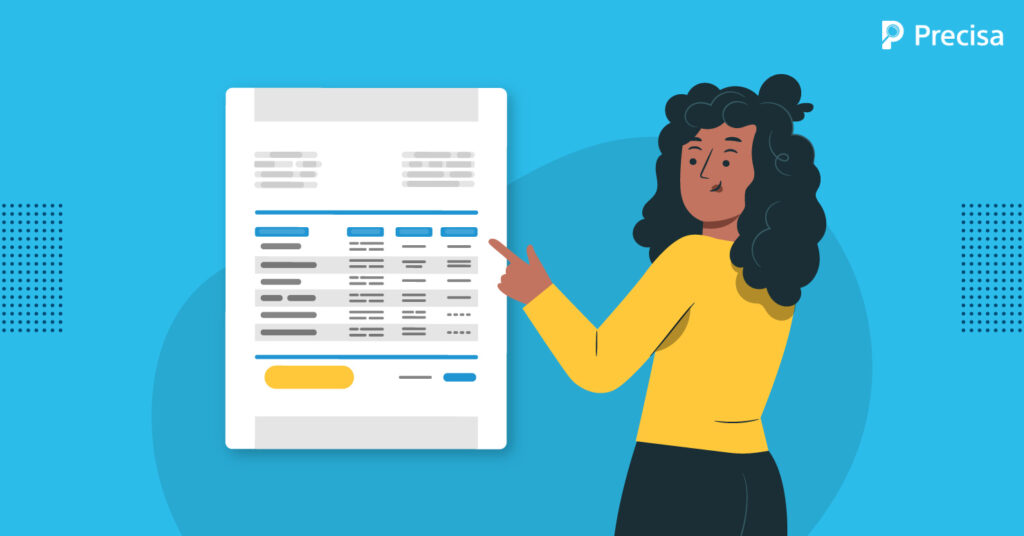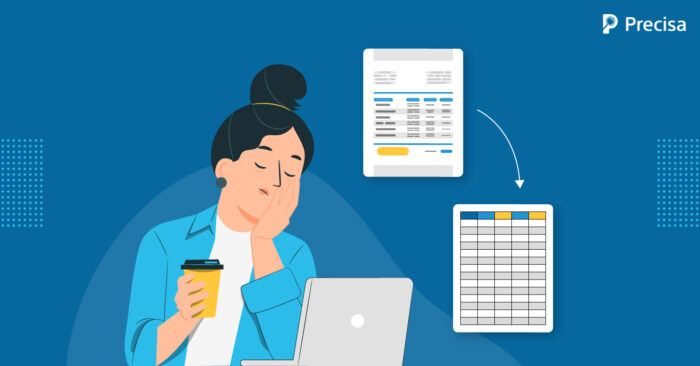Bank Statement Analysis: Benefits, Challenges, and Current Solutions

A bank statement is a summary of a specific account holder’s inflows and outflows over a set time period. The bank’s transactional history is commonly regarded as reliable documentation for determining the financial health of any customer.
As and when incurred, all sources of revenue, expenses, withdrawals, overdraft payments, credit card payments, and so on form part of the bank statement.
The key document requested for any loan process or financial transaction audit – whether analysing commercial loans for firms or analysing retail loans for individuals – is a bank statement.
A bank statement can show any information that the examiner needs to approve loans or validate financial transactions.
What is Bank Statement Analysis?
Bank statement analysis is an assessment of the bank statement. There are a number of reasons and objectives for performing bank statement analysis. It is mostly done by commercial and retail banks, investment banks, institutional investors, and auditing organisations.
Bank statement analysis is used in commercial and retail banking to evaluate a borrower’s financial health and compare all relevant transaction information with other documents provided, such as income tax or GST filings and financial statements.
What can Bank Statement Analysis be Used for?
Bank statement analysis is not required by banks, but it can be performed by anyone for a number of reasons, including:
1. To Determine Creditworthiness
Granting loans accounts for the majority of a financial institution’s operational revenue, whether it be commercial or retail banking, an NBFC, or anything else. Before granting a loan, any institution must first assess the borrower’s creditworthiness to assure that the loan will be repaid on time. Bank Statement Analysis plays an important role in determining the reliability of the borrower.
2. Fraud Checks
If an organisation suspects that fraudulent transactions are being carried out, it can conduct a bank statement analysis of its vendors or other parties. Furthermore, bank statement analysis aids in determining whether bank statements provided in PDF format have been changed or altered with the purpose of defrauding.
3. To Identify Red Flags
Using bank statement analysis, any red flags such as large cash deposits and cash withdrawals, negative balances, overdraft crossing limits, or cheques bounced may be identified quickly and can be cross-verified with all other provided papers. These flags indicate that the account holder’s financial health is deteriorating.
4. Tax Purposes
Tax authorities could utilise bank statement analysis to determine if the assessee has revealed all transactions in their returns and whether the relevant taxes have been paid.
5. To Deduce Patterns
Bank statement analysis can be used to deduce banking activity patterns. This study can be used to forecast and predict bank deposits, withdrawals, and overdrafts, among other things. Furthermore, bank statement analysis can be used to perform a sales vs collections study.
This can assist a company in reducing customer ageing and identifying consumers who take longer to pay. Other reports can be generated as well, such as collection trends for top 20 customers vs sales to these customers, the variance between sales and bank collections, and so on.
Challenges Faced in Manual Bank Statement Analysis
Although bank statement analysis appears to be basic and straightforward, it is not. When analysing bank statements, the following issues are frequently encountered:
1. Lack of Uniformity
Bank statements from various banks are not all the same. The process of bank statement analysis is hampered by the varying style of contents, format, non-standard abbreviation, and narration — for example, the columns, titles, column sequence, and so on.
2. Bank Statement File Formats
Bank statement file formats include PDF, XML, scanned images, and others. It’s difficult to analyse so many distinct formats from so many different banks.
3. Tedious Exercise
Consolidation of bank statements in various forms and file types is a time-consuming process when done manually.
4. Error-Prone
Public sector banks often depend on offline bank statement analysis, using manpower to transcribe data from pdf files into excel spreadsheets. However, the conversion is prone to errors and delay, as copying data from PDFs is challenging.
Current Solutions
To address the aforementioned concerns and challenges, businesses must invest in a good automated bank statement analyser that can provide the following benefits:
1. Faster loan approval rate
To obtain a loan from a bank, potential clients are normally required to provide proof of income. Financial institutions often require at least 10 days to verify income and respond to borrowers in this manner.
With the automated bank statement analyser, which is driven by Artificial Intelligence and Machine Learning, institutions may examine creditworthiness in seconds with just one click. Faster approvals result in higher ROI, which increases bank and other lending institutions’ profitability.
2. Improved customer experience
Faster approval implies a smoother and more convenient overall experience for the customers. The bank statement analysis tool not only saves time and effort for the loan provider but also improves service for the borrowers by streamlining the entire process and reducing multiple rounds of verification.
3. Higher credit underwriting accuracy
Traditional loan approval and credit card issuance systems are time-consuming and error-prone. Automated underwriting methods based on artificial intelligence and machine learning can provide better confidence in credit determinations and higher acceptance rates than ever before.
In addition, AI-powered bank statement analysers can help reduce fraud by detecting discrepancies between claims made and found on the bank statements of those requesting credit.
4. Reduced risk of NPAs
NPAs can lead to major banking crisis in the country, and financial institutions are under increasing pressure to keep their non-performing assets under control. This was especially important during the COVID era, which experienced widespread loan defaults. Accurate analysis of bank statements helps identify deteriorating assets and take effective actions in time.
5. Consistency
Every bank has its own method for reporting financial statements, making it difficult to translate them into a standardised and simple manner. The data from various historical periods or random narrations/descriptions, presented in layouts specific to each bank, need to be read and analysed together to make appropriate decisions.
A Bank Statement Analysis Tool is a straightforward, AI-based, cutting-edge technology that eliminates routine problems, accelerates the procedure, and ensures consistency across various bank statement formats.
Conclusion
The Bank Statement Analysis tool has a fantastic response time. It eliminates the need for human labour and enables error-free analysis. This type of analyser aids banks and financial institutions in making good lending choices in minutes.
Technology is beneficial to a wide range of industries and processes. However, it is exceptionally beneficial to the financial services industry because it performs a vital function in establishing creditworthiness.
Precisa is a bank statement analysis tool that scrutinises even the tiniest details in bank statements to ease the decision-making process. It helps lenders check the borrower’s credibility and make an informed decision.
Try out Precisa with a 14-day free trial.




